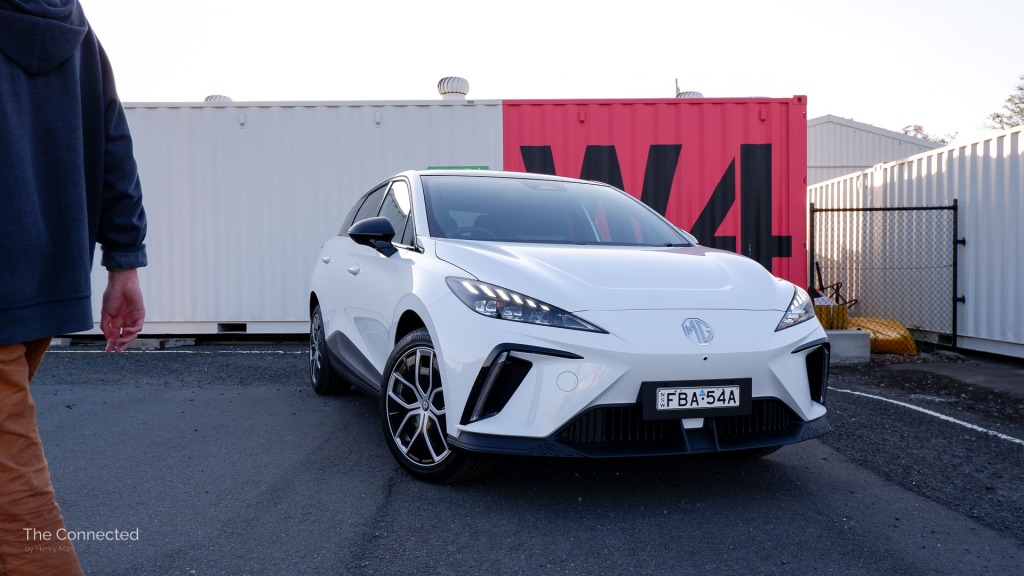The world has been yearning for a mass market small electric vehicle that costs on par with a petrol car and doesn’t look like a quirky science experiment. The MG 4 is it.
The Tesla Model 3 sedan, Model Y, and BYD Atto 3 SUV have been a wake up call for the automotive industry. Yet, while they’ve become global success stories, they’re still contentious and arguably don’t truly appeal to the masses.
Enter the MG 4. It’s a small electric hatchback that represents the Chinese company’s first ‘global car’, on a ground-up EV platform, with a price matching traditional petrol-powered hatches including the top-spec Toyota Corolla, Hyundai i30 and Honda Civic.
The company believes the mid-pack MG 4 Essence 64 variant will be the best seller, so could this be ‘the one’ to convince Australians to finally make the electric switch?
EDITOR’S NOTE: The press vehicle was provided by MG Motor Australia for a seven-day independent evaluation. No copy approval was given before publication and we have no commercial arrangements with the company.


Pros.
+ Stylish, less polarising design
+ High quality interior
+ Well-tuned one-pedal driving
+ Quiet and comfortable ride
+ Fun to drive
Cons.
– Unrefined adaptive cruise, lane assist
– Missing rear interior light, sharp side skirts
– Negligible daily driving range advantage versus smaller battery
– Wind buffeting noise when driving
– Limited rear window visibility
Vehicle tested:
| Model | 2024 MG 4 |
| Variant | Essence 64 |
| Starting price | $47,990 before on-road costs |
| Exterior colour | Dover White (no cost) |
| Interior colour | ‘Black Luxury’ PU leather and fabric seats with blue stitching |
| Country made | China |
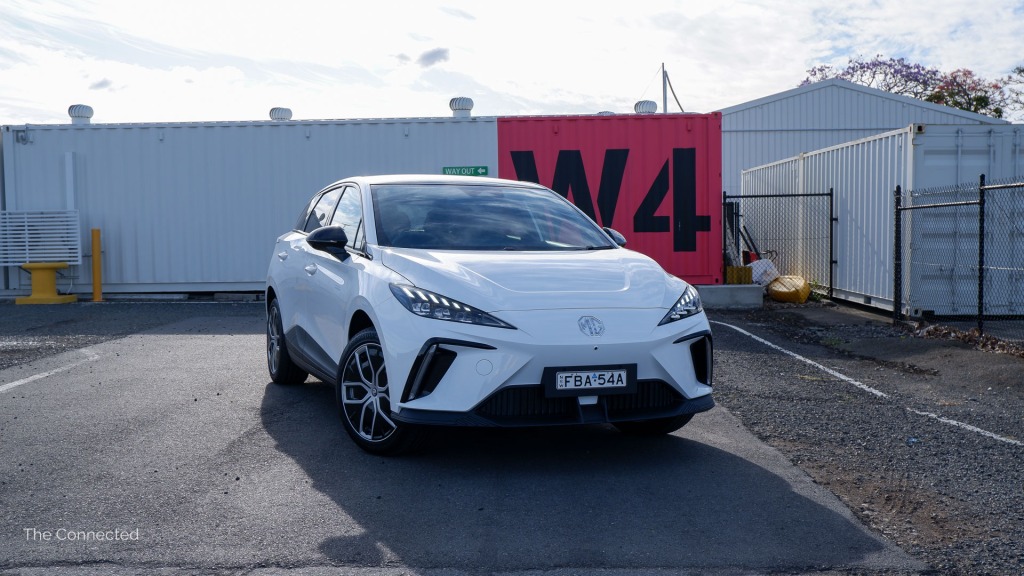
Design.
The MG 4 features a sporty design that’s arguably less polarising than its rivals.
While the BYD Dolphin and GWM Ora may turn heads with their quirky and cute designs, the MG 4 is more reminiscent of the larger Kia EV6 with its sharp angles, a hood scoop indent, sporty side skirts, and a sporty sloping rear.
This Essence 64 variant gains particularly distinctive design elements, including front LED indicator blades, an almost full-width rear light bar with unique illuminated strokes atop, and a prominent double bubble rear spoiler.
The downsides? To be picky, this model’s 18-inch aerodynamic wheel caps look a bit too flat compared to the 17-inch covers on the base model, the faux carbon fibre skirts are unnecessary, and the mandatory black-painted roof doesn’t bode well for hiding dust, nor protecting against the Australian sun.







Premium interior?
The MG 4’s perceived interior quality is the impressive highlight amid some legacy automakers cutting material quality costs to invest in developing EVs.
Soft leatherette materials, blue stitching, and clicky buttons and switches lifts this budget EV with an arguably premium-feeling interior.
The MG 4 EV is a noticeable step up in interior quality compared to the older, but similarly-priced ZS EV small SUV.
The unique squircle-shaped two-spoke steering wheel is covered in satisfyingly plush leatherette, the front door cards and armrest are padded, and the entire dashboard is soft. The rear door cards opt for a plastic surface instead, but still doesn’t feel cheap.
There are even some blossom-shaped patterns on the centre console, smartphone pad, and dash vents.
The MG 4’s interior plastic materials aren’t as scratchy as the BYD Dolphin and is overall a level higher in perceived quality compared to the more expensive Cupra Born.




While the interior is dark – particularly at the rear with a black headliner – there’s some blue contrast stitching and this Essence 64 variant features seats with a fabric centre and outer polyurethane (PU) leatherette bolsters. The former has unique black, white and blue micro dotted detailing.
The MG 4 features just enough gloss black surfaces across the ‘floating’ centre console, air vents, doors and steering wheel to make the interior feel more interesting – but not an overwhelming fingerprint and dust magnet.
Compared to the facelifted MG ZS EV small SUV, the centre armrest lid and glovebox open/close with resistance, and the buttons and switches feel more solid and clicky – from the row of shortcuts below the touchscreen to the window controls.
It’s an impressively built interior that even puts into question the price of some more expensive internal combustion engine and electric vehicle models, such as the Hyundai Ioniq 5 and Kia EV6.
However, on this early-build press vehicle, the driver’s side front door area rattled at times during driving and when the speakers were playing at volume 10 or higher, especially at bass-heavy peaks. It’s worth noting that quality control gremlins can also be found on more expensive vehicles, including the high-end Porche Taycan.
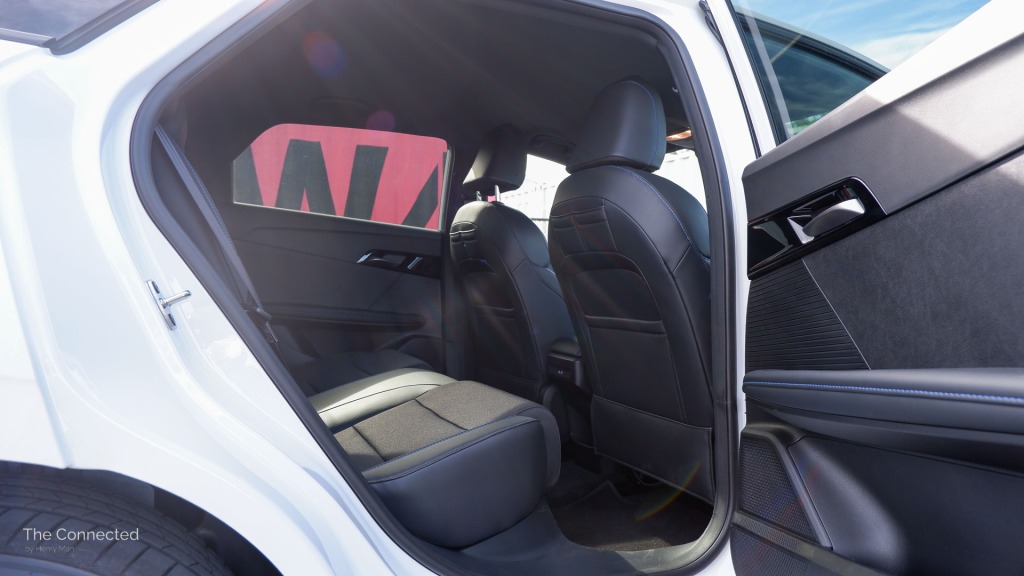
Practicality.
2024 MG 4 Essence 64 dimensions:
| Length x width x height | 4287 x 1836 x 1516mm |
| Wheelbase | 2705mm |
| Ground clearance | 158mm |
| Boot space (min / rear seats folded) | 350 / 1165-litres |
| Frunk space | N/A |
| Rear seat split fold | 60:40 |
| Child seat anchors | Rear seats: 2x ISOFIX + 3x top-tether points |
The MG 4 Essence 64 provides an adequate 350-litre boot, with a minimal bumper protrusion and an almost flat load lip.
It’s 13 litres less than the cheaper Excite variants, likely due to the mechanism for the two-level adjustable boot floor, and doesn’t offer underfloor storage so MG’s included trickle charging cable bag needs to sit open in the boot.
Impressively, it features felt-lined materials that extend to the sides and load lip to prevent loose items scratching the boot and for sound-deadening (more in the driving section below).
There’s an LED light, two nets on each side, and a single bag hook. However, while the latter two are welcome features not even found on the ZS EV small SUV, they’re small and not as usable. For instance, the bag hook can’t hang thicker grocery bag handles or backpacks.
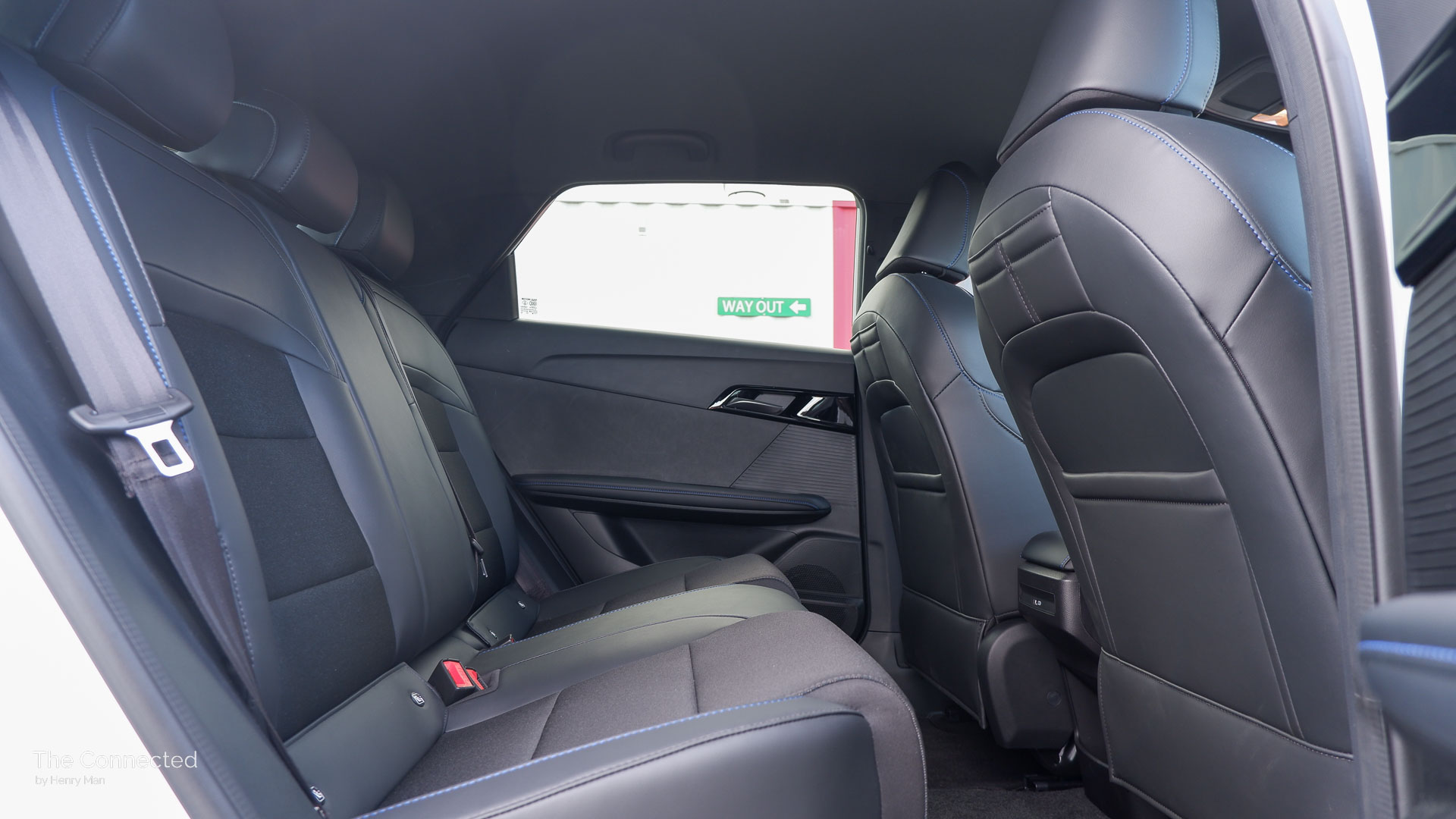
The family dealbreaker.
The lack of a rear interior light on all MG 4 models could be the key dealbreaker for using the electric hatch as regular family car.
Combined with the dark headliner, seeing the back and fitting children’s car seats can be difficult when in a covered car park and during night time.




Despite LEDs deployed in the boot, glovebox and subtle overhead mood light, the front interior lights use dim incandescent bulbs that don’t illuminate the front row as well, either.
In addition to the lack of rear interior illumination, the MG 4 also doesn’t provide rear air vents, a fold-down centre armrest, and there’s only one (non-illuminated) USB-A charging port for rear passengers. The rear door bottle holders are restricted, too.
This Essence variant offers seatback and smartphone pockets, plus rear tinted privacy glass, and one-touch auto up/down functionality for all four windows.
Fortunately, the MG 4 offers good rear legroom, foot space underneath the front seats and headroom, with the ISOFIX child seat anchorage points accessible via a velcroed cover. Unlike the similarly-priced ZS EV, a middle-seat headrest is included.
However, despite the dedicated Modular Scalable Platform (MSP), the middle floor still protrudes slightly and has the typical electric car symptom of a higher floor, resulting in perched up legs.
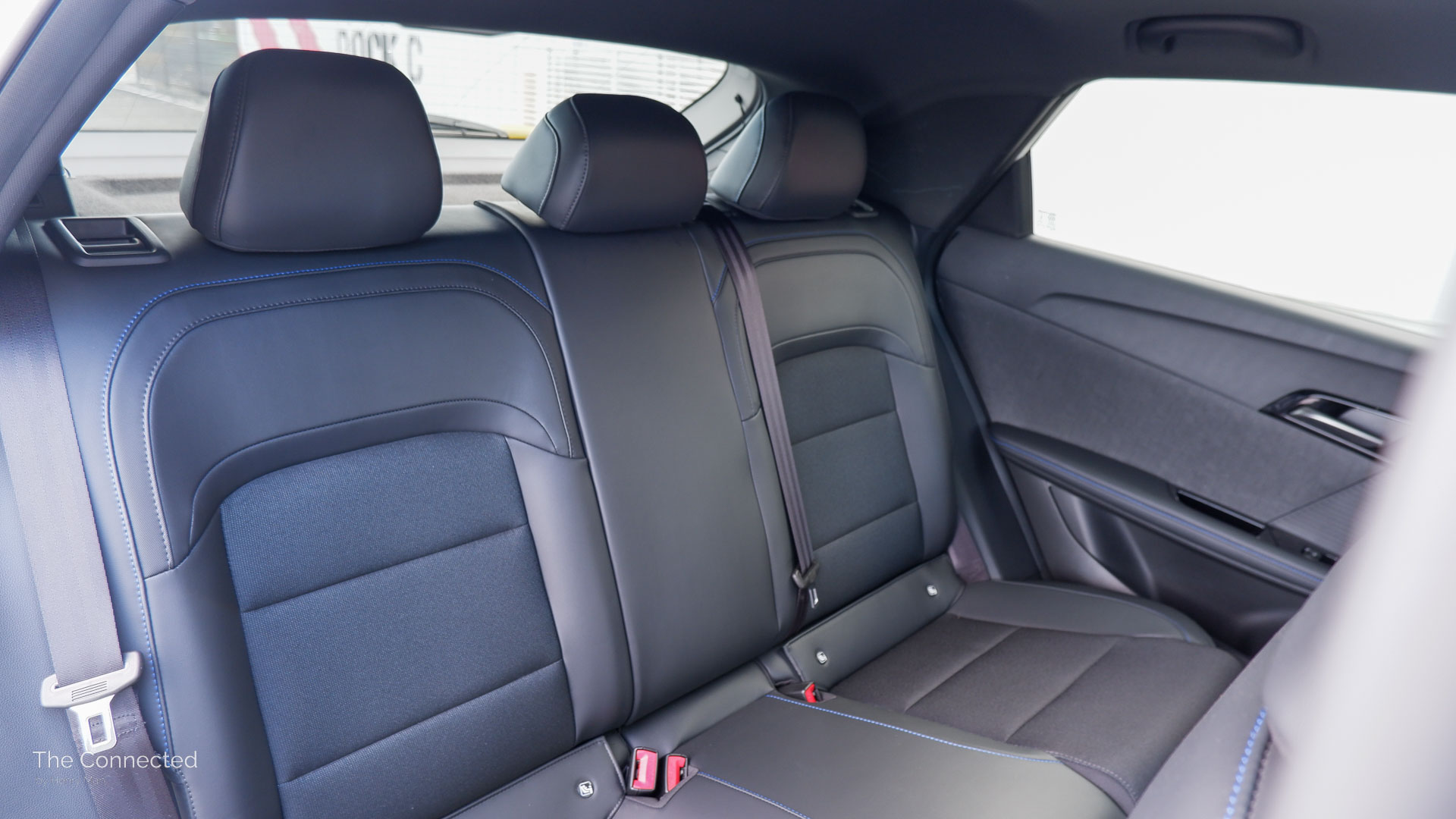



At the front row, the sporty exterior side skirts protrude more than ideal, collects dust and can sharply dig into your legs when exiting the vehicle.
The MG 4 electric hatch offers an almost open floor interior with a low-set storage box dividing the front seats – which is practical and can be closed with a roller shutter – and the ‘floating’ centre console provides an ergonomic place to sit a smartphone. Both have a grippy rubber surface.
A particularly clever feature are the two holes to feed-through USB cables to the smartphone pad from underneath. It is a simple solution to keeping cable management tidy, especially when MG only offers wired smartphone projection.
The centre armrest box and glovebox are well-sized, though the former has a net ahead of it and isn’t as practical since it’s small and easily forgotten as it’s out-of-sight.
Below the centre console are two gripped cup holders. While they’re in a low position, it was still easy to reach. Though, larger cups with long straws and taller bottles can be more annoying to grab since the centre console can get in the way.


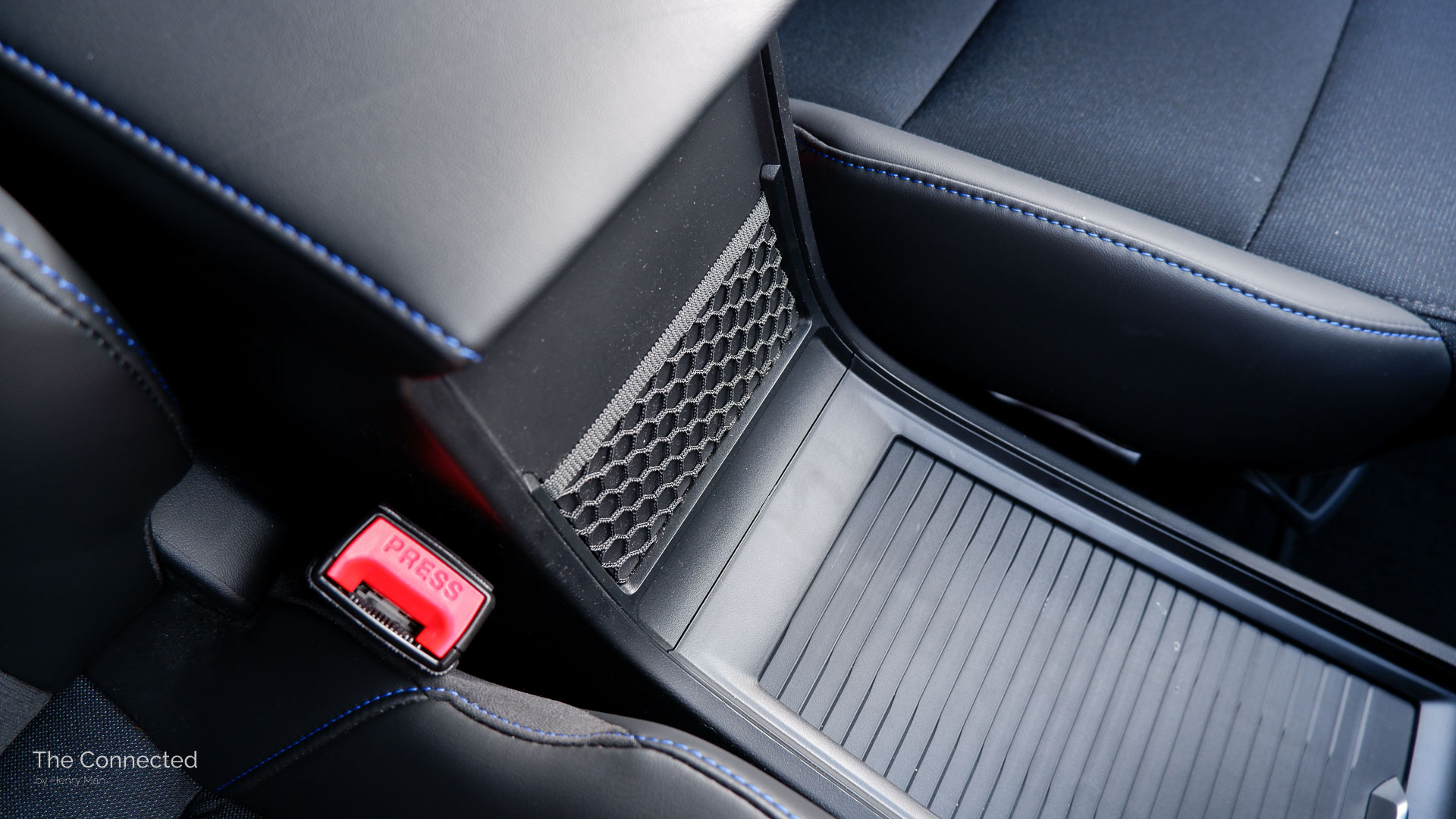

The USB-A and USB-C charging ports are also above the cup holders, so cables can dangle precariously near drinks. As per the rear, the ports are not illuminated and being under the centre console makes it tricky to see in the dark.
Despite this, the MG 4 offers comfortable and supportive seats, with this Essence model bringing a heat resistant-friendly fabric material centre and artificial leather bolsters.
The driver seat is six-way electrically-adjustable, but doesn’t offer a memory position function, nor lumbar setting. The front passenger seat is manually adjustable.
Both front seats offer three-stage heating, the steering wheel has single-level heating, and single-zone climate control is standard.
Arguably a key advantage than cheaper Excite models is the inclusion of basic auto electric-folding wing mirrors, which could make or break whether you can fit in a tight parking spot or someone accidentally knocking the vehicle while it’s parked.

Technology.
2024 MG 4 Essence 64 tech features:
| 10.25-inch touchscreen | 7.0-inch driver instrument display |
| Wired Apple CarPlay and wired Android Auto | Six-speaker audio |
| Built-in maps and voice control | 15-watt Qi wireless charging pad |
| MG iSmart online services with mobile app and Bluetooth key functionality | 1x USB-A, 2x USB-C charging ports |
The MG 4 EV features a clear and bright 10.25-inch central touchscreen.
The windscreen display protrudes from the dash and is positioned well to be in the driver’s line-of-sight, with a row of shortcut buttons underneath to turn on/off the air-conditioning, demisters and adjust the volume.
The Chinese automaker’s own software is based on the Android mobile operating system underneath and performs well after booting up. Concerns of an unresponsive display on the older MG ZS EV have been addressed and the user interface looks modern with automatic light and dark modes.
Some buttons are slightly small and the separation of vehicle settings and other general settings can be confusing, but the learning curve does dissipate over time.




In several cases on my tester, the touchscreen froze after startup, but restarted itself after a couple of seconds. I found this more likely occurred when I entered the vehicle and drove off quickly.
The built-in maps included on the Essence 64 and upwards is based on Here Technologies, which is also used on BYD electric cars such as the Atto 3. It is easy to search for a destination – albeit after fumbling with the small keyboard – and integrates with the vehicle range to find public charging stations, though I still preferred smartphone projection.
Wired Apple CarPlay and wired Android Auto is available via the single USB-A port and is easy to plug in every time thanks to the clever cable management system.
However, the Qi wireless charging pad cannot be disabled, so smartphones should be placed face-down on the rubberised surface. I also found all USB-A and USB-C charging ports relatively slow to charge devices.
Critically, changing the regenerative braking level, drive modes, and single-zone climate control are primarily operated through the screen. Thankfully, the MG 4 automatically pops up the climate control screen when entering the vehicle and provides large buttons to quickly adjust before driving off.
But, while using smartphone projection, drivers can’t swipe down from the top to access the climate screen; a small hack is to double press the on/off shortcut button beneath.
Whereas the ZS EV provides physical buttons to easily change the temperature and fan speed, the MG 4 doesn’t.
To negate this, the electric hatch does have two customisable favourite buttons on the steering wheel, which can be set to change the temperature and fan speed via the steering wheel joystick.
While I quickly got accustomed to it in my week, it can still be distracting while driving as drivers still need to look at the screen and then press the favourite button again to return to the previous screen (eg: maps on Android Auto) since it doesn’t automatically cancel out.

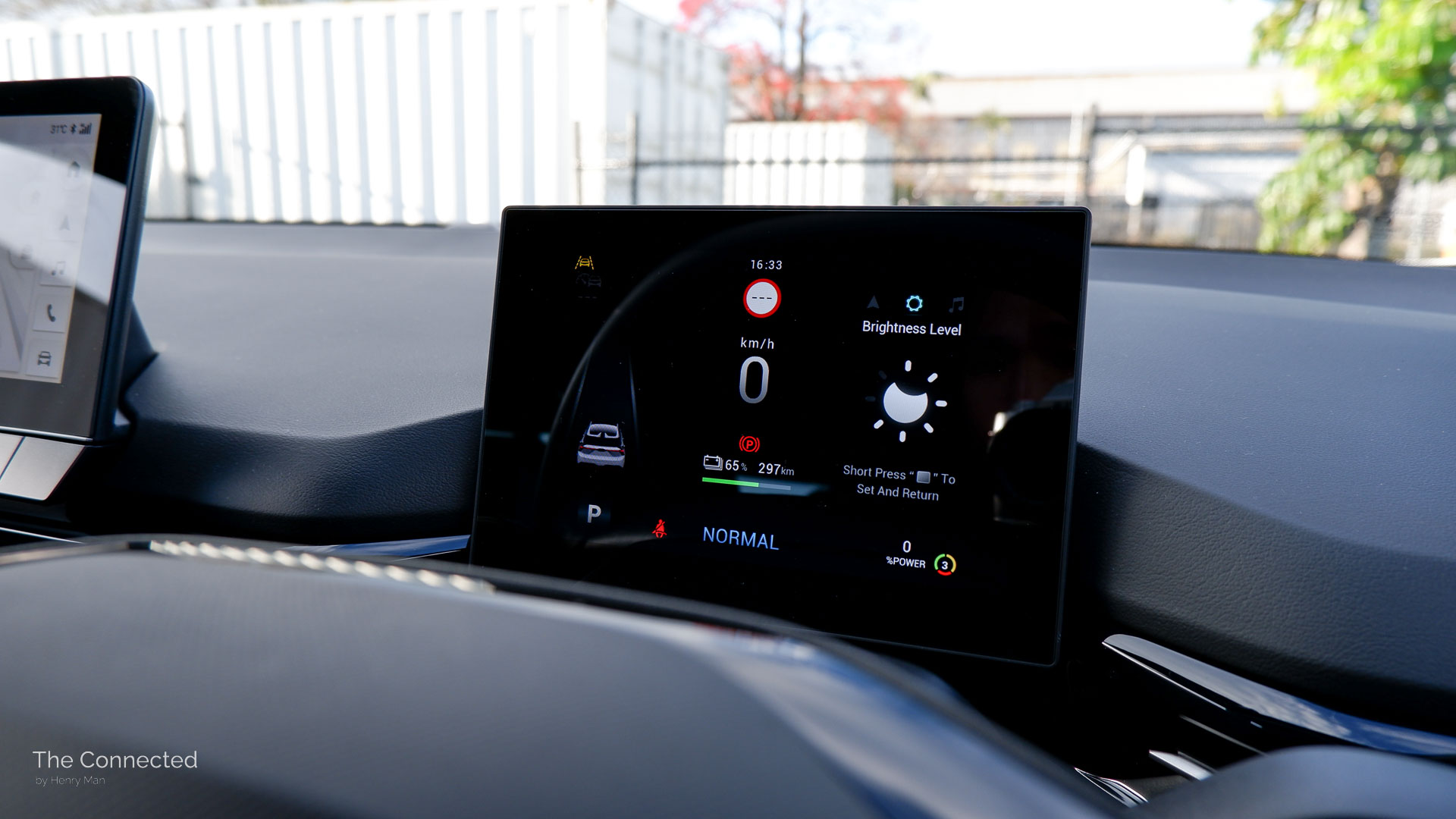


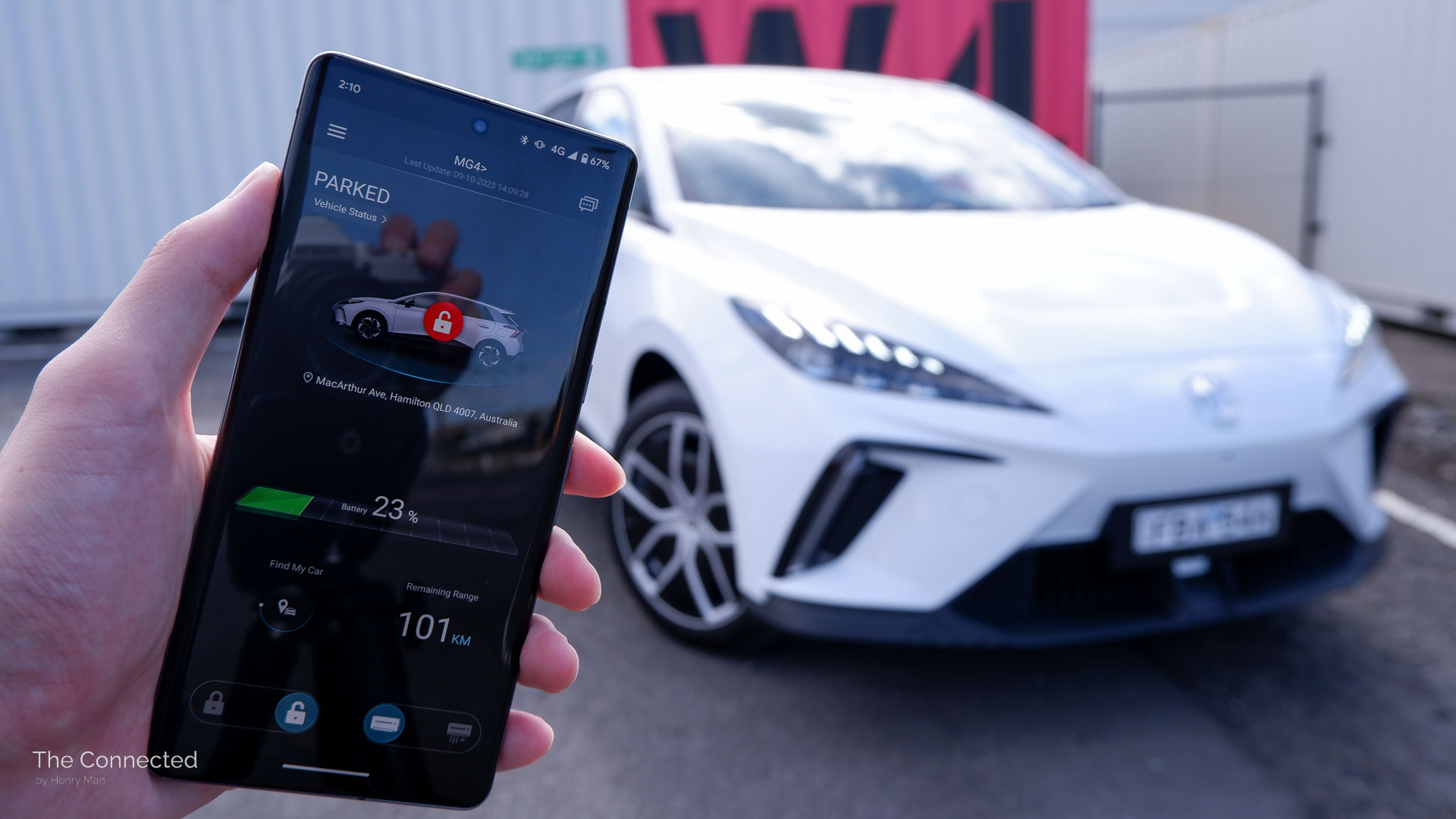

Both the central 10.25-inch touchscreen and 7.0-inch driver instruments can be too bright in dark conditions.
When the exterior night lights are activated, both slightly dim – but not enough. To address this, the former can be manually adjusted by swiping down a panel from the top-right, but this leaves the instrument display still being too bright at night on its lowest brightness setting.
The instrument screen is a good size for displaying important information in front of the driver, but some elements such as the time, regen mode and battery percentage appear too small and disproportionate to the much larger drive mode text.
The MG electric car also brings its iSmart cellular connectivity, which includes a built-in weather app, Amazon Music streaming, a clunky and limited voice control system on this Essence variant, and a remote smartphone app.
This enables owners to conveniently check the battery status and remaining range, pre-start the air-conditioning and set the temperature based on the indicated interior and exterior temperature, and sound the horn to find the vehicle on the map.
The app’s user interface could be more intuitive (you can’t delete your online account for one, despite the option being present), but sending commands to the vehicle is much quicker than Hyundai Bluelink and Kia Connect, for instance.
This high-spec MG 4 Essence variant exclusively has the ability to use the connected smartphone as a key via Bluetooth.
However, unlike Tesla and Polestar apps, it doesn’t function as a proximity key substitute and requires owners to manually open the app, through the profile screen, and into the digital key page to unlock the doors and press the start button in order to drive the vehicle. It acts as more of a backup method.
Despite the cellular connectivity, over-the-air (OTA) software update functionality is unavailable.
The interior packs six-speakers, which sounded adequate, and is two more than the lesser Excite variants.

Safety.
2024 MG 4 Essence 64 safety features:
| Front auto emergency braking (AEB) with vehicle/pedestrian/cyclist detection | 360-degree camera system |
| Blind-spot monitoring | Rear parking sensors |
| Rear cross-traffic alert | Door open warning |
| Lane-keep assist | Speed sign detection |
| Adaptive cruise control with lane-centring assist |
The MG 4 has achieved the full five-star safety rating from the Australasian New Car Assessment Program (ANCAP) under the 2022 testing criteria.
It’s worth noting that there’s no automatic wipers, rear auto emergency braking (AEB), front parking sensors, and a front-centre interior airbag on any MG 4 model.
The lane-keep assist isn’t as over-sensitive as the ZS EV, the separate adaptive cruise control stalk has been simplified to the steering wheel, and it now (finally) uses regenerative braking for slowing down in adaptive cruise.
However, critically, the adaptive cruise control isn’t as refined with a ‘ping-pong’ behaviour – it tended to approach the vehicle in front too quickly, realise it and brake too hard, resulting in it accelerating up again too quickly. This cycle habitually repeats in moving traffic.
It also slows down when driving through slight road bends, though pressing the accelerator pedal helps nudge it and doesn’t completely deactivate adaptive cruise.

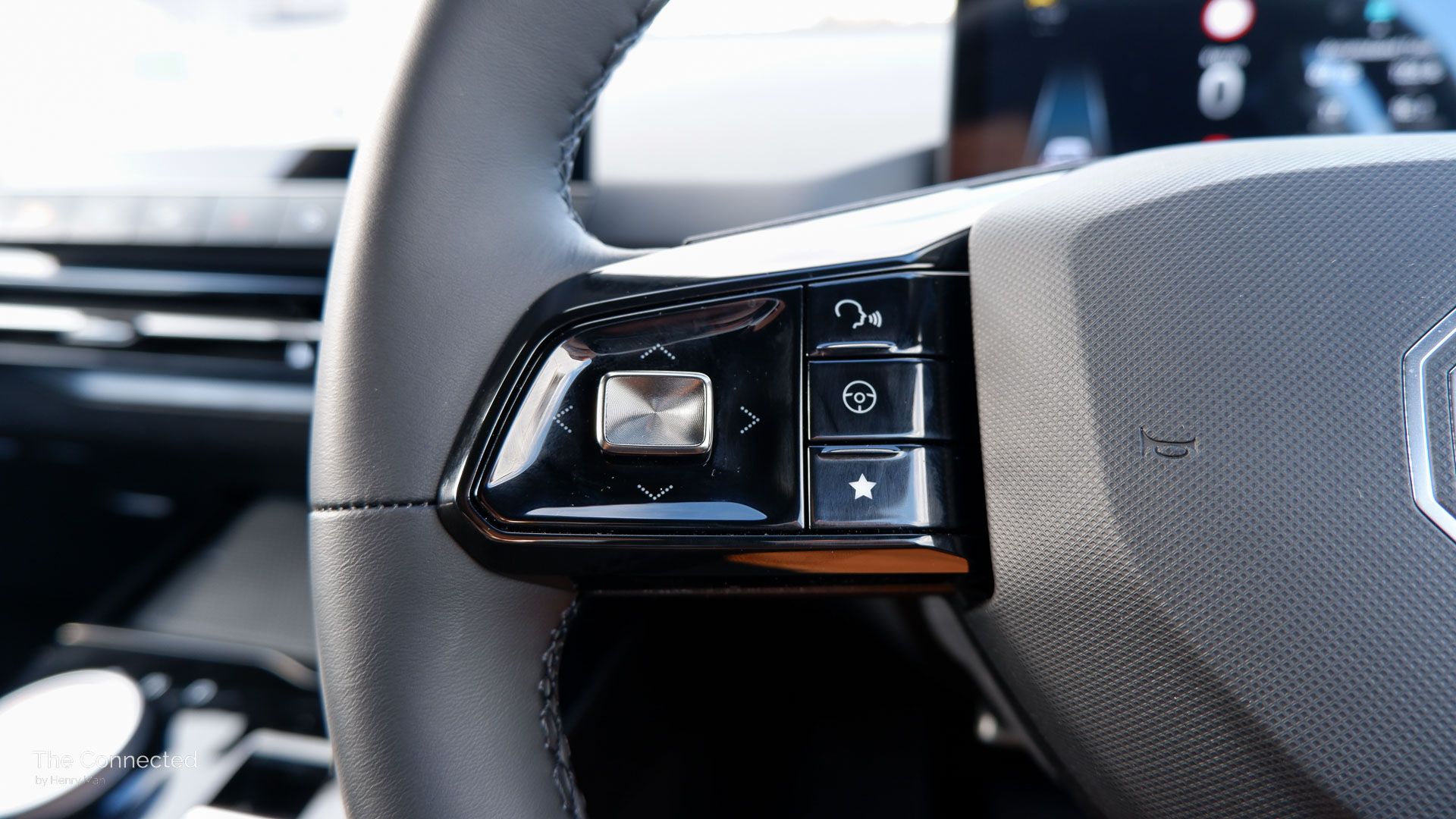


Furthermore, while improved, the lane-centring assist system is uncertain and constantly micro-twitches the wheel, rather than smoothly steering.
In one edge case driving a slight bend and facing the sun on Brisbane’s Inner City Bypass, the steering wheel abruptly turned out of the lane. I also found the lane-centring detection hit-and-miss as it can disable at times, despite clearly marked road lines.
This is simply the unfortunate compromise of a lower-cost vehicle compared to the better calibrated systems on pricier EVs from brands such as Hyundai, Kia and Polestar.
As with all safety assistance systems, both hands should be on the steering wheel at all times.
On the instrument display, the MG 4 offers nifty Tesla-style visualisations that can differentiate between a car, truck or motorcycle, and also projects speed signs. It doesn’t annoyingly chime if you travel past the detected speed limit, though it isn’t always accurate.
If you prioritise blind-spot monitoring and rear cross-traffic alert, these handy rear radar-based systems are reserved for high-spec Essence, Long Range and XPower variants.
All MG 4 models emit a pedestrian warning sound, which wasn’t present on the ZS EV example I’ve tested previously, and isn’t as loud as those found on BYD and Hyundai EVs.



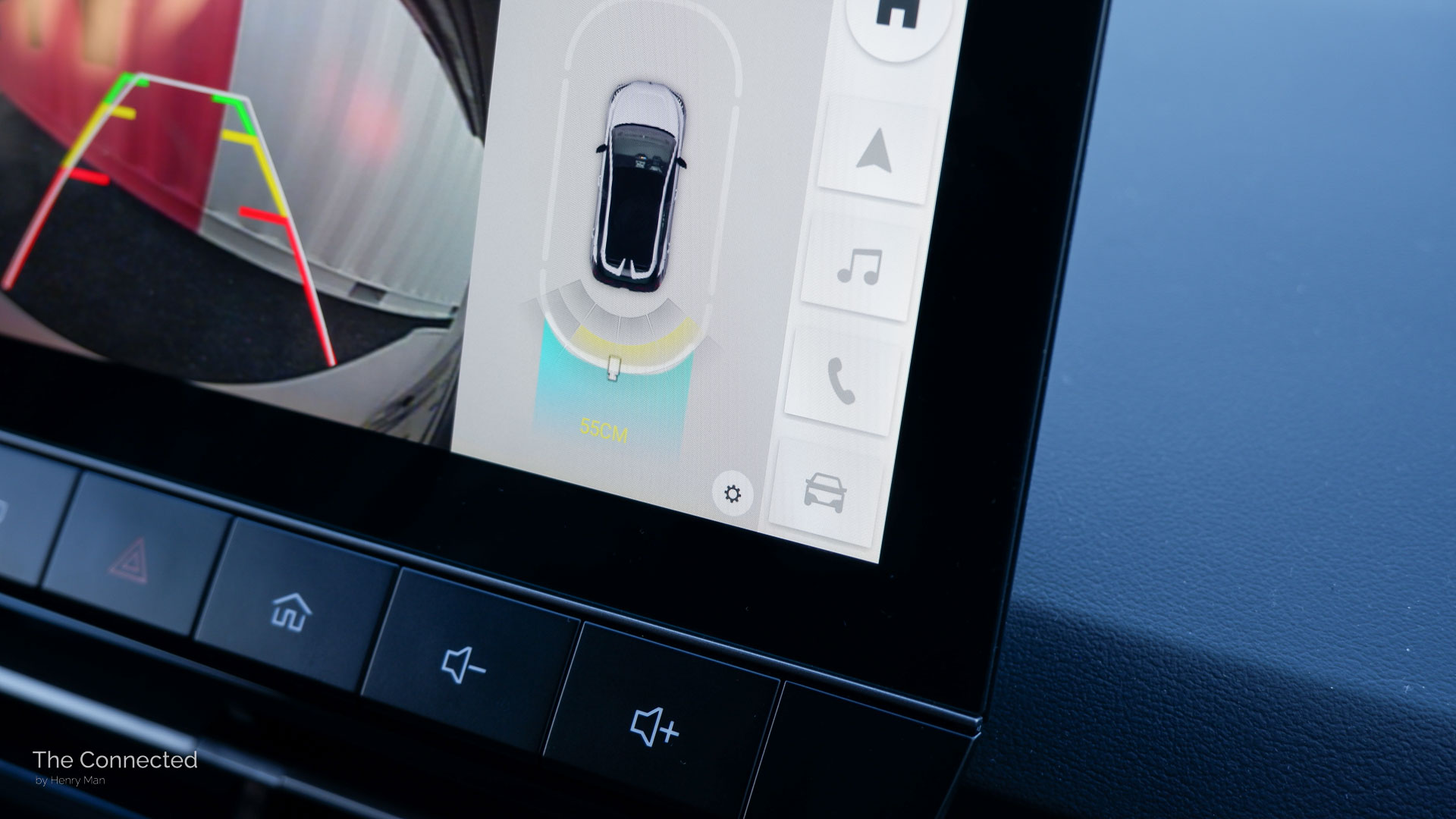
While improved, the 360-degree camera system still isn’t the highest resolution and distorts objects. It does conveniently turn on the respective side view when indicating and the steering wheel favourite button can be set to toggle it on, but unfortunately cuts out when travelling beyond 15km/h.
The rear parking sensors also display the proximity to objects on the touchscreen in centimetres – similar to Tesla and GWM – but didn’t seem as accurate in my testing.
Moreover, the MG 4 offers impressive LED headlight performance at night, with a particularly effective high beam. The Essence and upwards gain full LED lights, including LED front indicators and an almost full-width rear LED light bar, but still uses incandescent rear indicator and reverse light bulbs.
I commend that the switch to activate/disable the automatic light function on the stalk defaults to on. Strangely, the rear fog light is turned on via a small button at the top corner of the touchscreen.
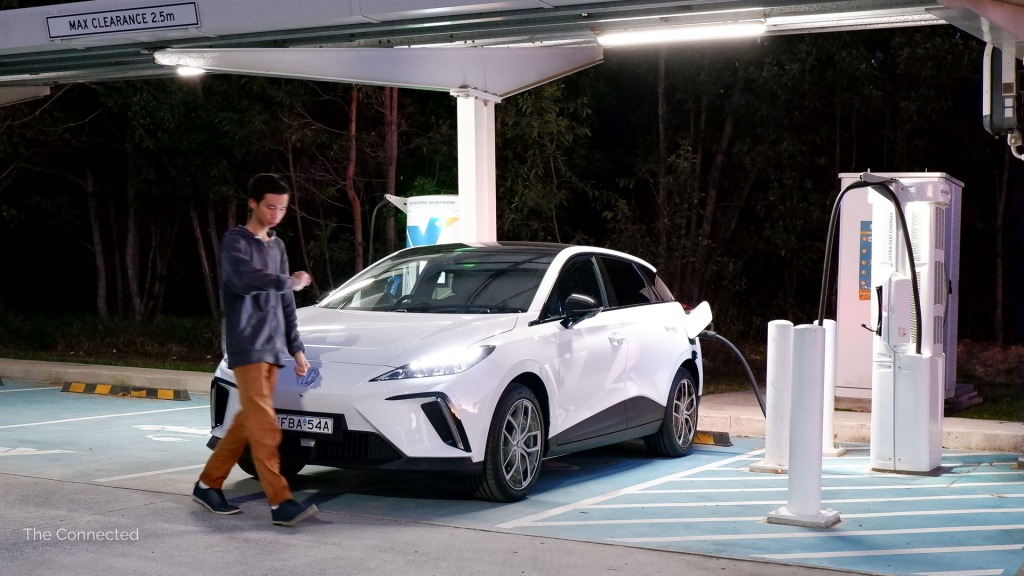
Range and charging.
2024 MG 4 Essence 64 battery and charging specs:
| Claimed driving range (WLTP combined) | 435km |
| Claimed energy efficiency (WLTP combined) | 13.8kWh/100km |
| Battery size | 62.1kWh usable (64kWh gross) |
| Battery type | Lithium-ion NMC |
| Battery voltage | 400-volt class |
| Max AC / DC charging speed | 6.6kW / 140kW |
| Bidirectional charging | V2L capable (accessory purchase required) |
| Connector type | Type 2 / CCS2 |
The MG 4 Essence 64 electric car houses a 62.1kWh usable lithium-ion battery pack using a nickel-manganese-cobalt (NMC) cathode, with up to 435 kilometres claimed WLTP driving range on a full charge.
Unlike the BYD Dolphin, no MG 4 model has an energy-saving heat pump.
In my week driving a mix of highway-biased and urban conditions, the MG 4 indicated a respectable 16.2kWh/100km energy consumption for 384km real-world range.
Importantly, MG recommends an 80 per cent everyday charge limit to protect the longevity of the NMC battery. Therefore, the real-world daily range is around 307km.
I also found the remaining range readout on the instrument cluster to be too optimistic, and likely based on the conservative New European Driving Cycle (NEDC) test cycle.
Compared to the lower-spec Excite 64 – which has the same battery, but with smaller wheels and no rear spoiler – it can travel 15km more than the Essence 64 on the claimed WLTP test cycle.
Crucially, the base MG 4 Excite 51 features a smaller 50.8kWh usable lithium-iron-phosphate (LFP) battery that is longer-lasting, thermally safer and cheaper to produce.
The key advantage is it doesn’t have a charge limit – which means owners can fully charge to 100 per cent everyday and always utilise the 350km claimed WLTP range.


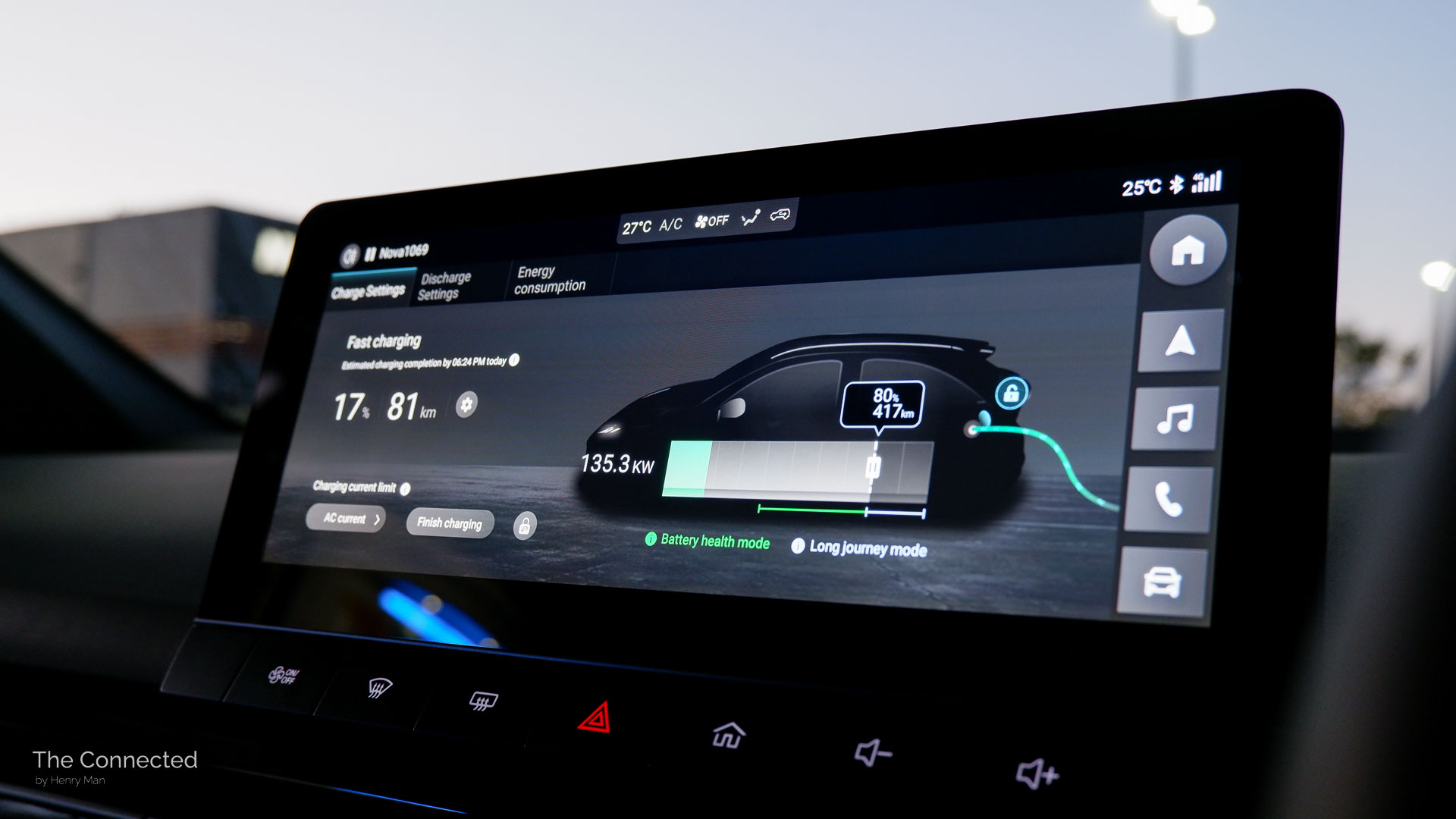
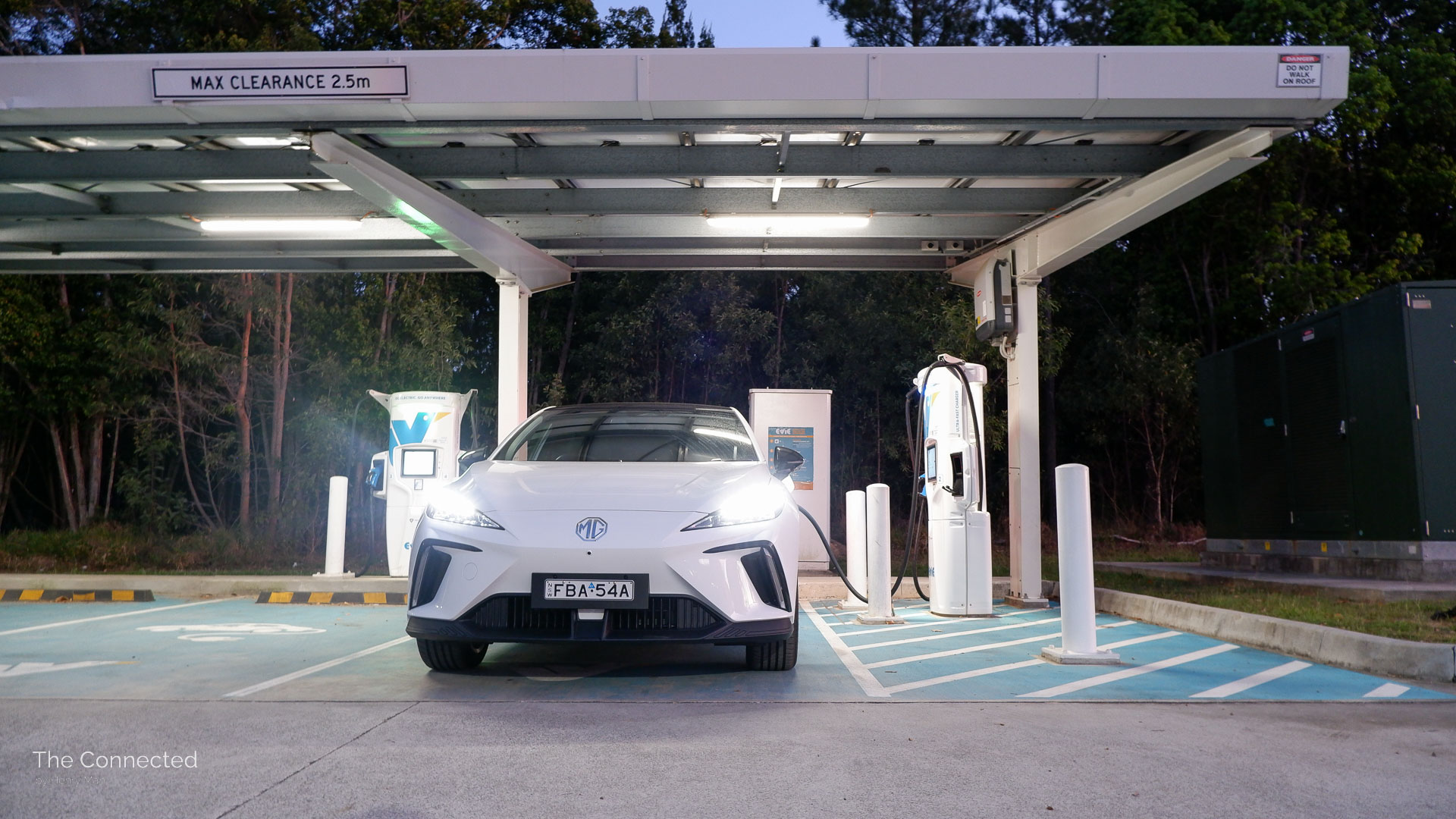
Based on claimed WLTP figures, that would mean the Essence 64’s NMC pack actually has 2km less everyday range than the cheaper Excite 51’s LFP battery.
But, the mid-sized MG 4 NMC battery does have the advantage of faster peak DC charging speeds – rated at up to 140kW on a compatible public fast charging station.
However, it only supports single-phase AC charging speeds up to 6.6kW, unlike the largest-battery Long Range 77 variant which can utilise 11kW AC three-phase charging units.
As per all EVs don’t expect to always achieve these rated peak charging speeds, as it depends on the battery percentage, temperature, and charging losses (especially on AC power where it needs to be converted to DC).

In my real-world charging test on a 350kW DC ultra-rapid public charging station, the MG 4 recharged from five to 80 per cent in around 30 minutes – in line with the company’s claim.
The Essence 64 gradually ramped up its charging speed initially to achieve a 137kW DC peak observed after four minutes.
Then, the battery management system (BMS) progressively slowed down the power input over time, as the battery filled up to 57kW DC speed at the 80 per cent mark.
The ‘intelligent battery heating’ function was enabled in the MG 4’s EV settings screen prior to reaching the public charging station.
Despite faster DC peak charging speeds on the Cupra Born in my previous test, the MG 4 sustains higher rates, resulting in a similar overall recharge time.

Handshake troubles.
On two public Tritium fast charging stations with Phoenix Contact plugs, it seemingly doesn’t attach as firmly to the top Type 2 portion where the communication ‘handshake’ takes place.
As a result, I needed to hold the plug in when initiating the charging session and release once it starts, similar to the Kia EV6 I’ve experienced.
This issue has also been mirrored by What Car?




The MG 4 electric car has a well-positioned Type 2 CCS charging port at the rear-left quarter of the vehicle. It is the ideal placement to use at select Tesla Superchargers that are open to all EV models, without the risk of blocking other stations.
The port is surrounded by lights in four quadrants to indicate the battery status, the touchscreen now displays the charging speed (unlike the ZS EV), and the MG iSmart mobile app allows monitoring the charging status remotely.
The Chinese automaker includes a three-pin trickle charging cable in a compact bag, but no longer offers the clever cable wrapping system as found on the ZS EV.
As opposed to the pricier Cupra Born in Australia, an AC charging schedule timer is built-in to automatically charge when electricity is cheapest at home.
The MG 4 also supports vehicle-to-load (V2L) via the exterior charging port, but an accessory adapter is required to be purchased separately from a MG dealer.

Driving.
2024 MG 4 Essence 64 powertrain specs:
| Electric motor | Single permanent magnet |
| Power | 150kW |
| Torque | 250Nm |
| Drive Type | RWD |
| Claimed 0-100km/h time | 7.2 seconds |
| Kerb weight | 1672kg |
| Payload | 451kg (towball download unknown) |
| Towing (unbraked / braked) | 500kg / 500kg |
The MG 4 Essence 64 provides all the power you need for daily commutes, with an enjoyable rear-wheel drive and steering setup.
Similar to Tesla, Polestar and GWM, the EV starts by sitting in the driver’s seat with the proximity key inside and pressing the brake pedal. Though, the MG doesn’t want to start when quickly hopping in.
With 150kW of power and a healthy 250Nm of torque on tap, the MG 4 offers smooth but prompt acceleration to effortlessly get up to the speed limit and shift through gaps in traffic. Even with the foot on the floor, it’s still comfortable for passengers, too.
It’s an electric warm hatch that’s arguably more engaging to drive than the heavier, large-battery Cupra Born.
The steering wheel is plush to hold and genuinely fun to push around corners thanks to rear-wheel drive. It also enables a tight 10.6-metre turning circle, though the Cupra Born still has the advantage on paper at 10.15 metres.






The budget-friendly electric car’s noise, vibration and harshness (NVH) is also refined.
The interior is well insulated from the outside – due in part to the soft material choices and extended felt-lining in the boot – and there’s minimal road noise when driving on rougher roads.
Despite the larger 18-inch wheels and Bridgestone Turanza T005 EV tyres, the MG 4 still feels comfortable on any surface with the feeling of a controlled and solid ride from its MSP chassis.
However, on my tester, there was noticeable wind whirring noise around the driver’s side wing mirror and the driver’s front door area did rattle at times when driving.
Critically, the key annoyance is the MG 4’s limited rear-view visibility due to the sloping glass and tall rear seat headrests. It’s even more restricted than the sporty-looking Kia EV6.




Another impressive highlight is the MG 4’s one-pedal driving regenerative braking system.
It’s easy to control, turns on the rear brake lights with good sensitivity at the right times, and even keeps them illuminated when completely stopped (though there’s some roll and MG does recommend pressing the brake pedal). Hyundai and Kia take note.
Owners do need to activate one-pedal driving via the touchscreen’s vehicle settings every time when starting the vehicle, but it’s not too much of a hassle as you become accustomed to it. It doesn’t reset every time you turn the drive selector.
Similarly, auto brake hold is toggled via the touchscreen, but it can be easily accessed by dragging down the top right of the display while in MG’s own software.

Ownership.
2024 MG 4 capped-price servicing prices:
| 2 years/40,000km | 4 years/80,000km | 6 years/120,000km | 8 years/160,000km | 10 years/200,000km |
| $296 | $907 | $296 | $907 | $296 |
The MG 4 EV is covered by a seven-year/unlimited kilometre vehicle and battery warranty.
The latter is slightly less than the industry-standard eight-years/160,000km and the Chinese automaker doesn’t explicitly promise a degradation percentage.
For commercial drivers – including rideshare freelancers – the vehicle and battery warranties are limited to seven years/160,000km.
Roadside assistance is included for the first seven years, provided owners service it on time with a MG franchise dealer.

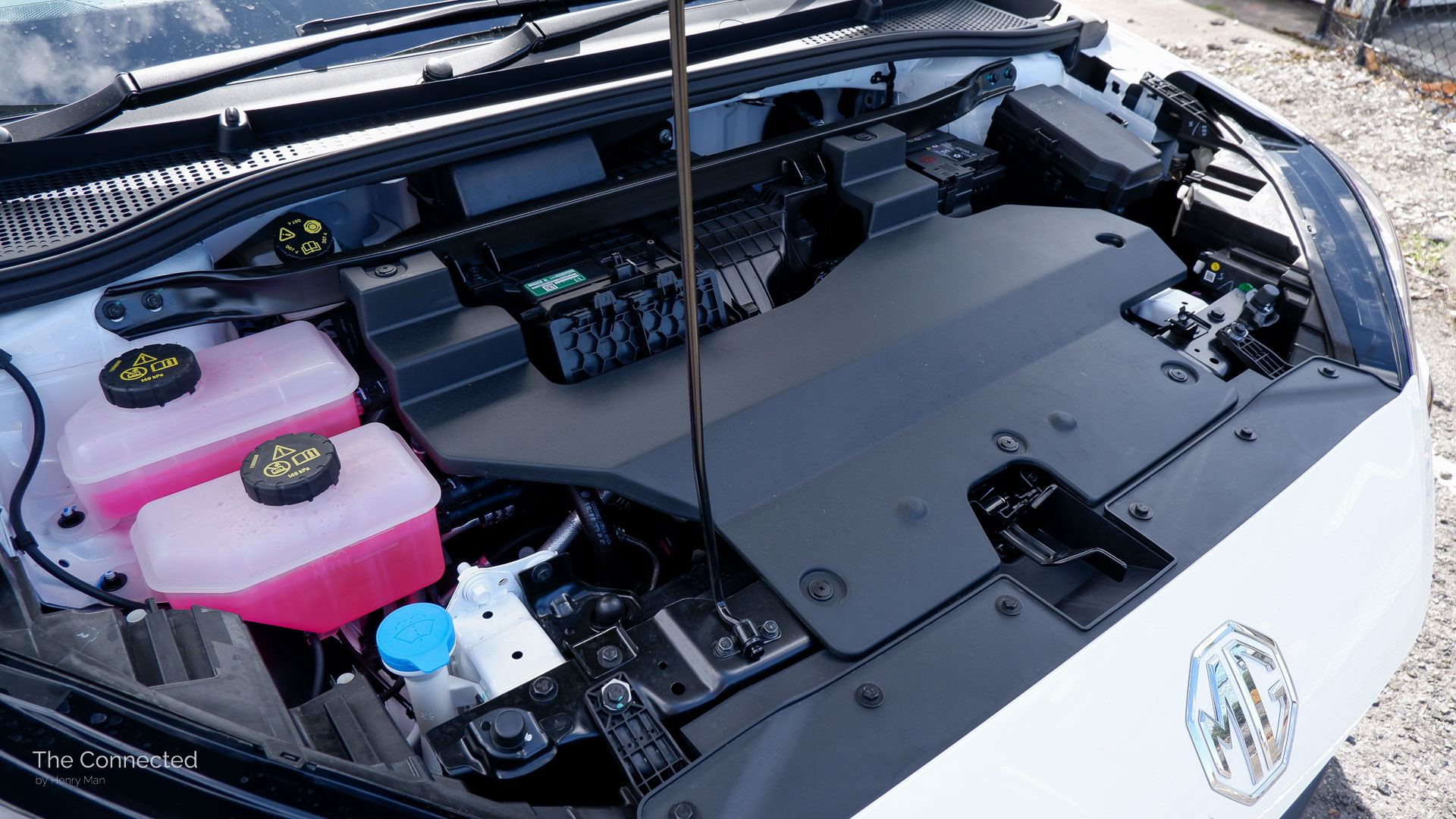
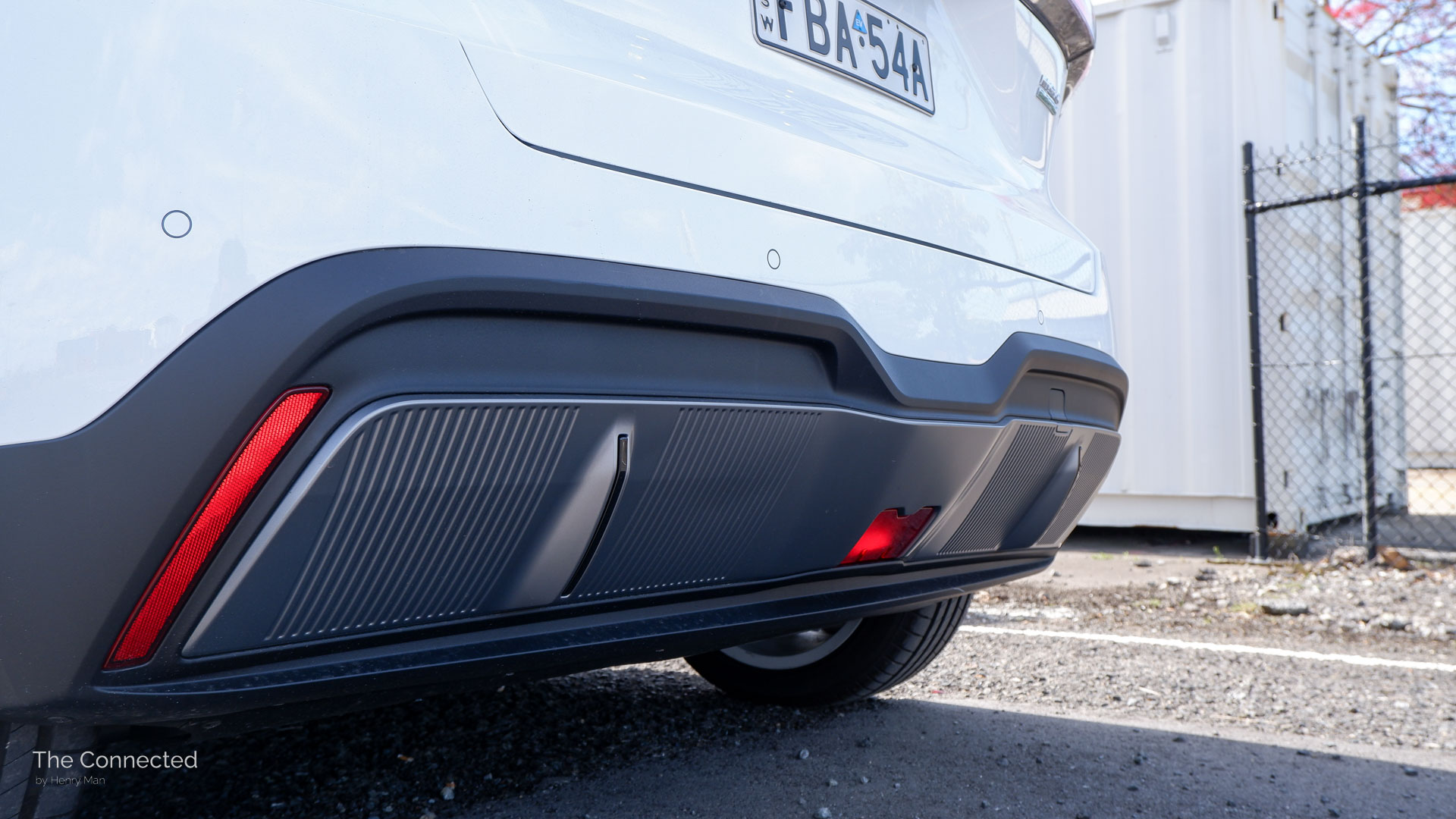
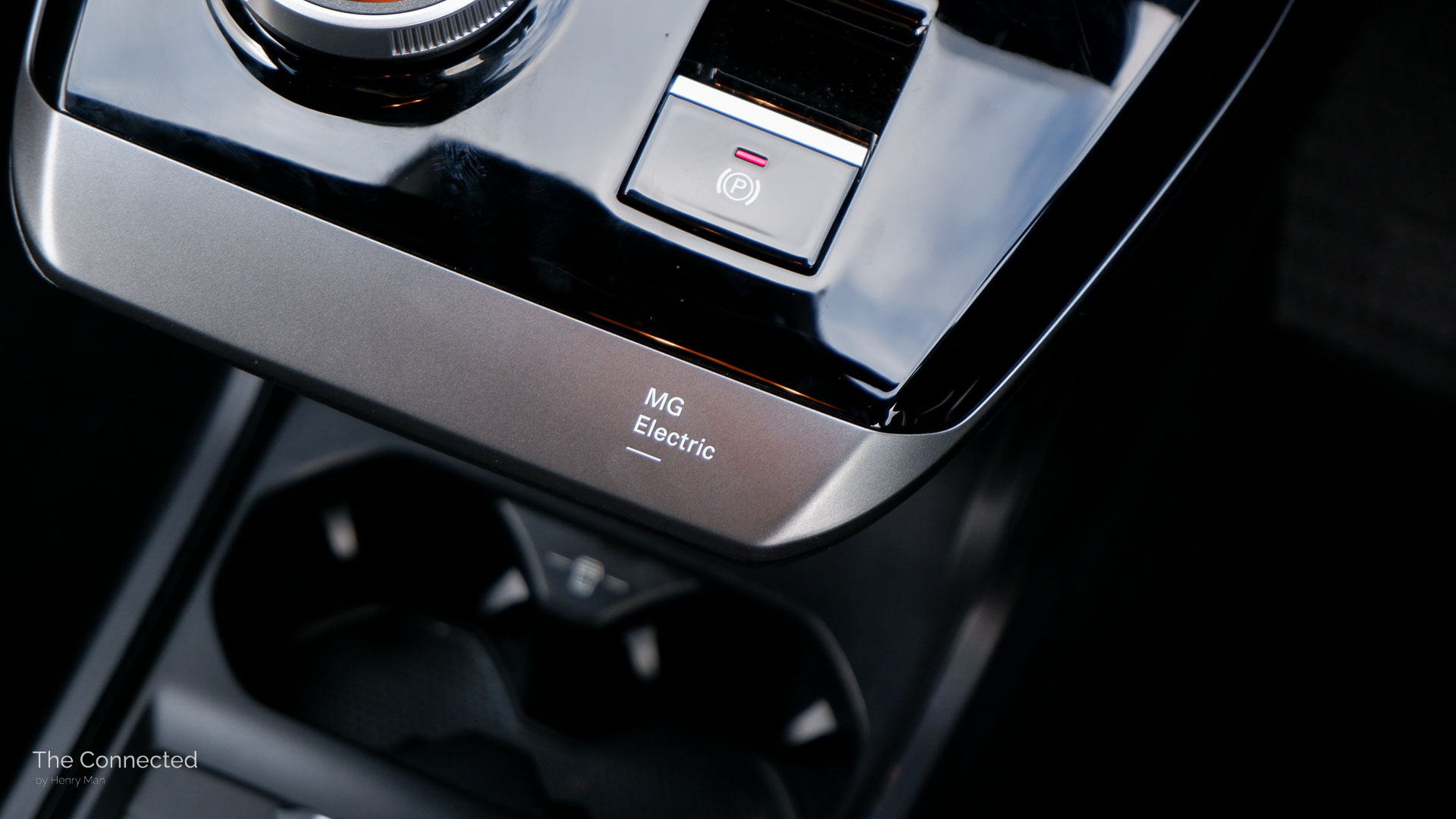
The MG 4 requires servicing every two years/40,000km (whichever occurs first), with capped-prices extending up to 14 years/280,000km.
After the first six years/120,000km, it’ll cost $1499 to maintain in total.
Despite the bi-annual major service being quite pricey, the wide servicing intervals mean the MG 4 is still generally cheaper to maintain overall than a similarly-priced petrol-engined small car.
The company hasn’t detailed how long the MG iSmart connectivity and mobile app is included for, but for the ZS EV, it is only free for one year, then a $50 per year subscription afterwards.
For context, Tesla includes ‘Standard Connectivity’ for up to eight years, Hyundai Bluelink lasts for five years, Polestar Connect is included for the first three years.
As per all electric cars, the MG 4 doesn’t include any spare tyre; only a patch-up tyre inflation kit is stored under the boot floor.

Rivals.
2024 MG 4 model range pricing (excluding on-road costs):
| Excite 51 | Excite 64 | Essence 64 | Long Range 77 | XPower |
| $38,990 | $44,990 | $47,990 | $55,990 | $59,990 |
The MG 4 competes with a growing number of electric hatches, alongside similarly-priced traditional petrol-powered small car offerings.
The BYD Dolphin electric hatch (from $38,890 before on-road costs) is the prime target for lower-end MG 4 variants, with a more ostentatious design, but smaller interior with lower-quality materials (at least from my initial impressions).
While the base Dynamic model has less power than the MG 4, the Dolphin’s key advantage is having every feature as standard and ones that can’t be had on the MG, such as a rear centre armrest, PM2.5 air filter and a fixed panoramic glass roof. The top Dolphin Premium variant matches the MG 4 on power, yet still costs thousands less than the Essence 64.
Additionally, the GWM Ora (from $39,990 before on-roads) offers a cute-retro design, with higher variants offering an electric tailgate, front seats with ventilation and massaging functionality, and front cross-traffic alert.
It also offers a sharp $99 capped price for the first five servicing visits, though intervals are set at every one year/15,000km.
Then, there’s the venerable Nissan Leaf (from $50,990) – which crucially lacks active battery cooling – and the Fiat 500e (from $52,500) that’s a micro electric city car with less driving range.
Buyers looking at the MG 4 Long Range 77 should consider the Cupra Born (from $59,990), while those seeking the high-performance MG 4 XPower hot hatch should look at the Volvo EX30 small SUV (from $59,990).
Meanwhile, comparably-priced petrol-powered alternatives include; the Hyundai i30 N Line Premium ($37,300), Toyota Corolla ZR Hybrid ($39,100), Volkswagen Golf R-Line ($40,490), Skoda Scala 110TSI Signature ($42,490 driveaway), and Honda Civic VTi LX ($47,200 drive-away).
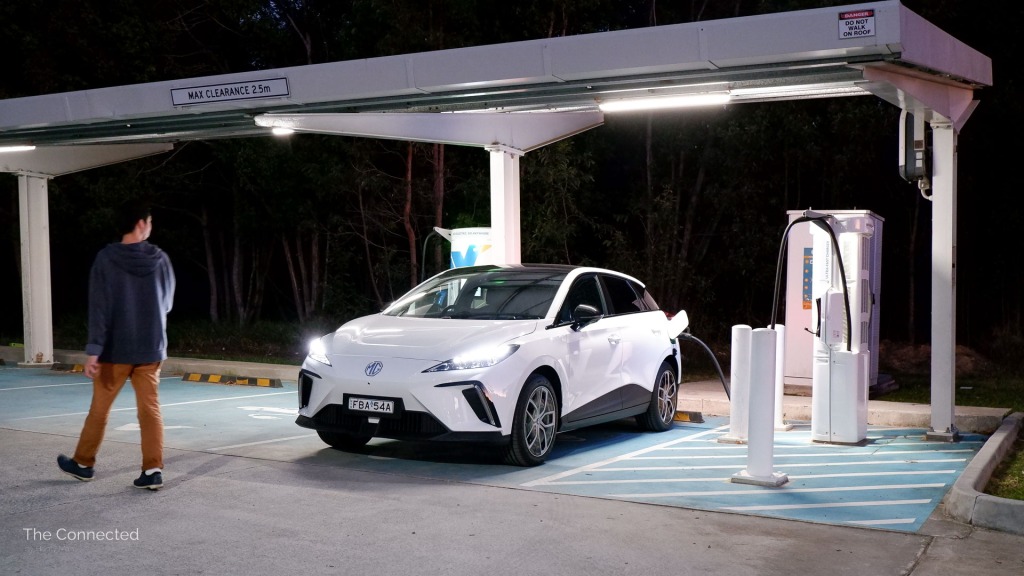
Would I pick the 2024 MG 4 Essence 64?
Four is an unlucky number in Chinese culture, but the MG 4 is one of the best mass-market electric cars yet with a price (already) matching petrol-powered cars.
The MG 4 EV offers an impressive high-quality interior, excellent one-pedal driving system, and a fun-to-drive powertrain in a slick design that’s arguably less contentious than its EV competition.
It’s much improved compared to the MG ZS EV and begs the question: is a SUV really necessary when you can buy a far better hatch for a similar price – if not less?
However, MG 4’s sporty design does compromise on rear visibility and ingress/egress, and the affordable price tag is demonstrated by unrefined safety assist tech and a lack of rear seat amenities which means it isn’t ideal for regular family duties.


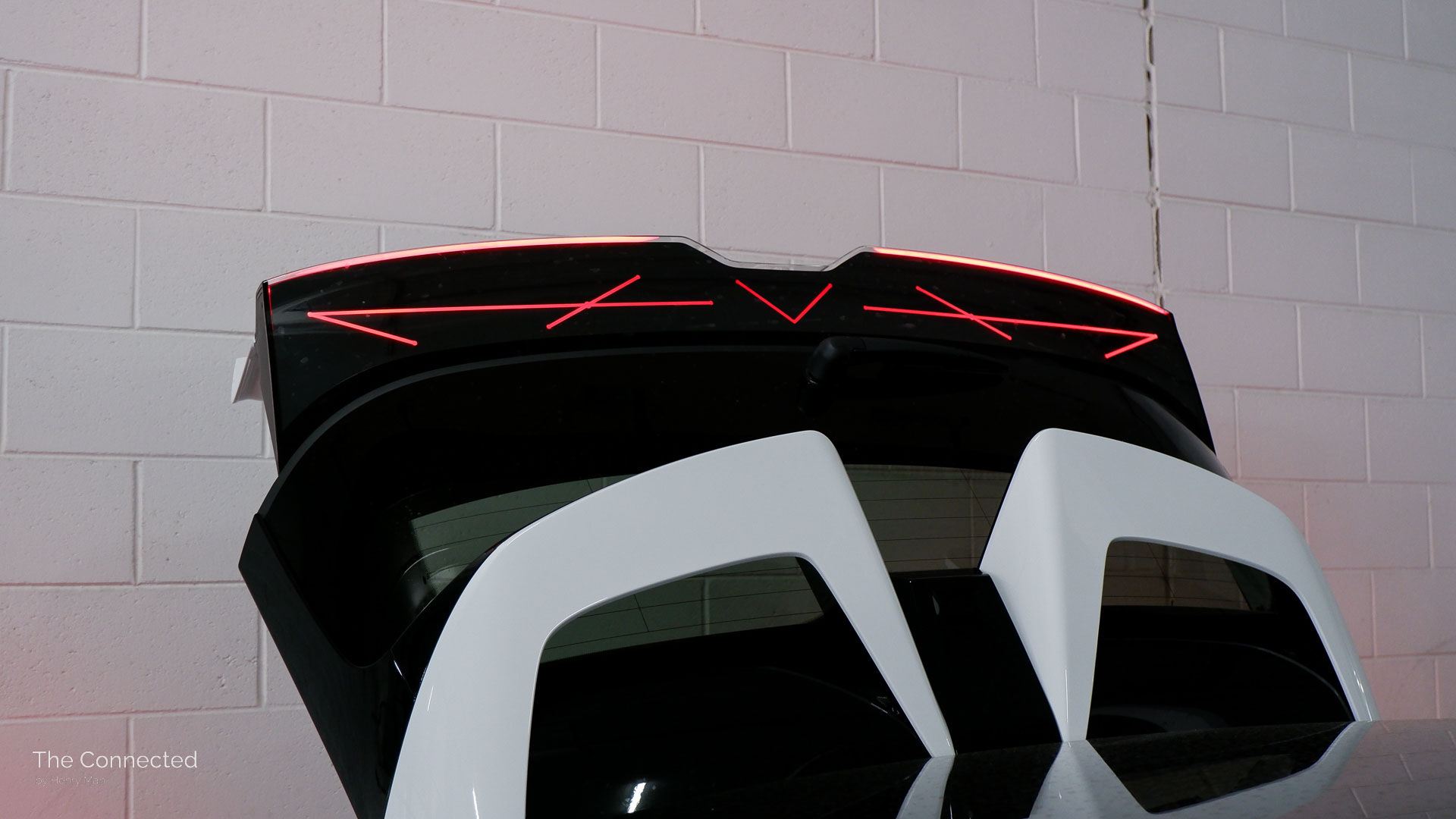

I’d pick the base MG 4 Excite 51 – if you can live without features such as electric folding wing mirrors, rear cross-traffic alert, and the striking rear LED light bar. With a longer lasting and thermally safer LFP battery, it provides similar daily range to the larger Excite 64 and Essence 64’s NMC battery with an 80 per cent everyday limit.
Alas, in the ideal world, the LFP battery would be matched with a high-spec variant.
If you prioritise the additional features, the MG 4 Essence 64 is still a good choice. It’s worth the extra $3000 compared to the Excite 64, but it’s a $8000 jump to the Long Range 77 for driving range that’s unecessary for most, and the high-performance XPower is over-the-top for Australian road speed limits.
Sure, if you want value, the BYD Dolphin and GWM Ora include more features as standard. But, the MG 4 is a mass market small EV that matches the price of a petrol car and doesn’t look like a quirky experiment.
It’s the electric car we’ve been waiting for.
Photographs by Henry Man
READ MORE: Can’t start charging an electric car? Here’s your guide.
READ MORE: 2024 Kia EV9 review: Made for Australia?
READ MORE: 2024 Volkswagen T-Roc review: Best of VW?
About the Author.
Henry Man is an independent content producer passionate about the intersection of technology and transportation. He is committed to critically detailed vehicle reviews, balanced reporting, and producing content in the public interest.
The Connected is an altruistic initiative to publish content free from commercial interests, while highlighting how tech and media shapes everyday society. Learn more.
Henry is an alum from The University of Queensland with a Bachelor of Communication/Journalism (with majors in Public Relations and Digital Media). He has worked with organisations including Wheels Media, Zecar, and CarExpert.

